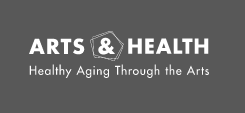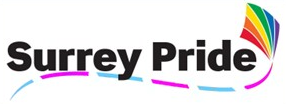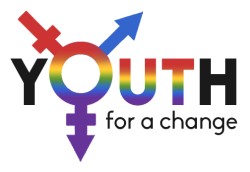I saw the best minds of my generation destroyed by madness, starving hysterical naked,
dragging themselves through the negro streets at dawn looking for an angry fix . . .
Allen Ginsberg from Howl and Other Poems
This is the opening stanza to a poem I read while headed to my own negro streets, also known back then as the ghetto, any ghetto. That one line from Ginsberg cut to my quick. That was me—enraged, betrayed, desolate, far more alone than any kid should be. I didn’t know it yet, but within days I’d find myself in the seediest, most notorious part of Boston, spending nights in a nearby graveyard hiding from very real dangers, curled up inside newspaper-lined garbage bags, using my own breath as a meager heat source. It was early 1967. The Summer of Love was on its way. I was 12 years old.
School was a nightmare. I was one of the smartest kids, loved to learn anything, but didn’t fit in, so I was often humiliated and shunned by other kids. I had no idea why back then. The consistent message was simply that I was unacceptable. Around Grade 6, I started taking whatever drugs or booze I could get my hands on, trying to dull the shame that was crippling me. While my teachers kept showing off my scholastic abilities, and encouraged my folks to “aim this child as high as you possibly can,” all I wanted to do was disappear and hide, from myself and everyone else.
If you’re a man reading this, try imagining waking up one day with . . . breasts. If you’re a woman reading this, try to imagine suddenly sprouting a moustache, a penis. Think about how self-alienating that might be, how surreal, and frankly horrifying, it would feel, especially, say, at around puberty.
Forget about what you know you are. Put yourself in the body-appropriate locker-room, naked, surrounded by other kids celebrating the very same-looking body you now find yourself encased in and absolutely cannot relate to. You have no script for this. Cast into totally the wrong role, the wrong costume, you look the same as them, but like left-handedness or right-handedness, you just know you’re not. It’s all horribly wrong. You have no sense of this character, but the show continues, and act you must, however awkward. You know you don’t belong here, like this, and you’re terrified someone else might see it too.
But you don’t know why. You don’t dare talk about it, don’t even have the language. There is no one to explain it, nowhere to turn. While the others flaunt and exaggerate their pubescent developments and mimic their favorite role models, you find no role model, see yourself reflected nowhere, except in the cruelest jokes, the most cutting remarks.
You scramble to create a plausible persona, flubbing your lines, one faux pas after another. An obvious misfit, you quickly become their special target. Then the teachers get in on it, misinterpreting your drastic drop in grades and your defensive, seemingly antisocial behaviour as intentional, disruptive, manipulative. You’re singled out further, your desk moved into the hall until you “learn to behave.” And now you sit where anyone in the whole school can take unobserved potshots at the freak.
At home it’s just as confusing. Well-intentioned constant pressure to toe the (gender) line: the innie line, no exceptions. Clothes, behaviour, hair, activities . . . pronoun . . . name . . . everything devised to reflect the designated gender. At some point you finally realize you’re deeply, irreparably flawed, and that there is no relief, no way to avoid it. There’s only leaving . . . via drugs, via running away, via suicide.
I tried all three, and have spent many adult years recovering from damage caused by the first two before I could even begin to repair the damage caused by growing up under such scrutiny, simply for not fitting adequately into the girl slot. Gender ambiguous is how it’s referred to today (1998). Transgendered, possibly transsexual.
Societal intolerance towards gender diversity cost me dearly: my home and safety, my youth, my family, and, equally, an education and fair shot at choosing my own career path. I was gifted, and I was tormented. No matter what I tried, I couldn’t make it work. So finally, I ran, as far as possible, bitterly, bitterly aware of everything I was sacrificing, but flat out of any other options. It was the Age of Aquarius, of peace, love, and flowers, and into the happening, I launched myself, a true believer. Back then, nobody talked about its increasingly grim, sleazy underbelly.
Almost 30 years later (1998), I’m no longer tormented for who I am. As a transitioning female-to-male transsexual, I’m gradually attaining the freedom to move through life relatively unafraid; now I’m seen by others the way I’ve always seen myself. Fitting into one of the ever-expanding slots now, I’m mercifully invisible, just another guy, no longer stuck in that “ew,-what-are-you-anyway?” zone, no longer a bully magnet for crude comments, jokes, threats.
For countless transgendered and transsexual people of my era and before, this is not the case, will never be the case. The mismatch between body and self is sometimes acutely visible, that bulls eye on their foreheads, the cost of authenticity. Heroes all (and upon whose shoulders I very gratefully stand), their lot is far graver, because it is (or, sadly, was) never-ending.
I firmly believe that educating K-12 school staff, healthcare providers, parents, anyone involved with youth, will have a vast and lifesaving effect on all our kids, not just the ones who would otherwise shatter and die. By embracing all diversities—gender and sexual as well as racial, body image, cultural, class, to name a few—and providing accurate information and positive role models, each kid will see themselves reflected and included. This, in itself, can protect them against what happened to me and so many others, many of whom did not survive.
This will put a candle in the window, so that every child can find their own unique and rightful way, hopefully ensuring them an actual, self-determined future as well.

Originally written in August 1998. May 2025 update: the author went on to do just that—to educate school staff, health care providers, parents, anyone involved with youth, from 1998 until now and ongoing.
Several words used in this piece are outdated and merely reflect the times in which it was written, not any resistance on the author’s part to embrace current terms.
Photo at the top: The Combat Zone was the name of the district of Boston where I found myself at age 12. Credit for photo: @Jerry Berndt Estate Title: CBD: Washington Street Adult Entertainment District












